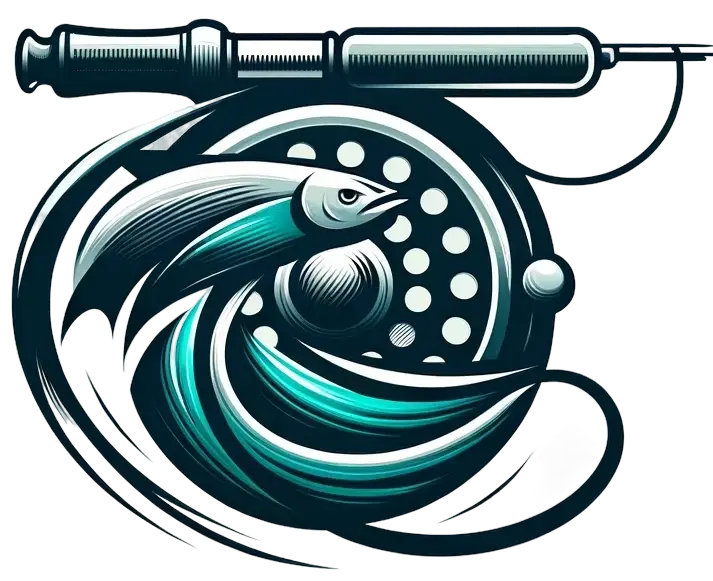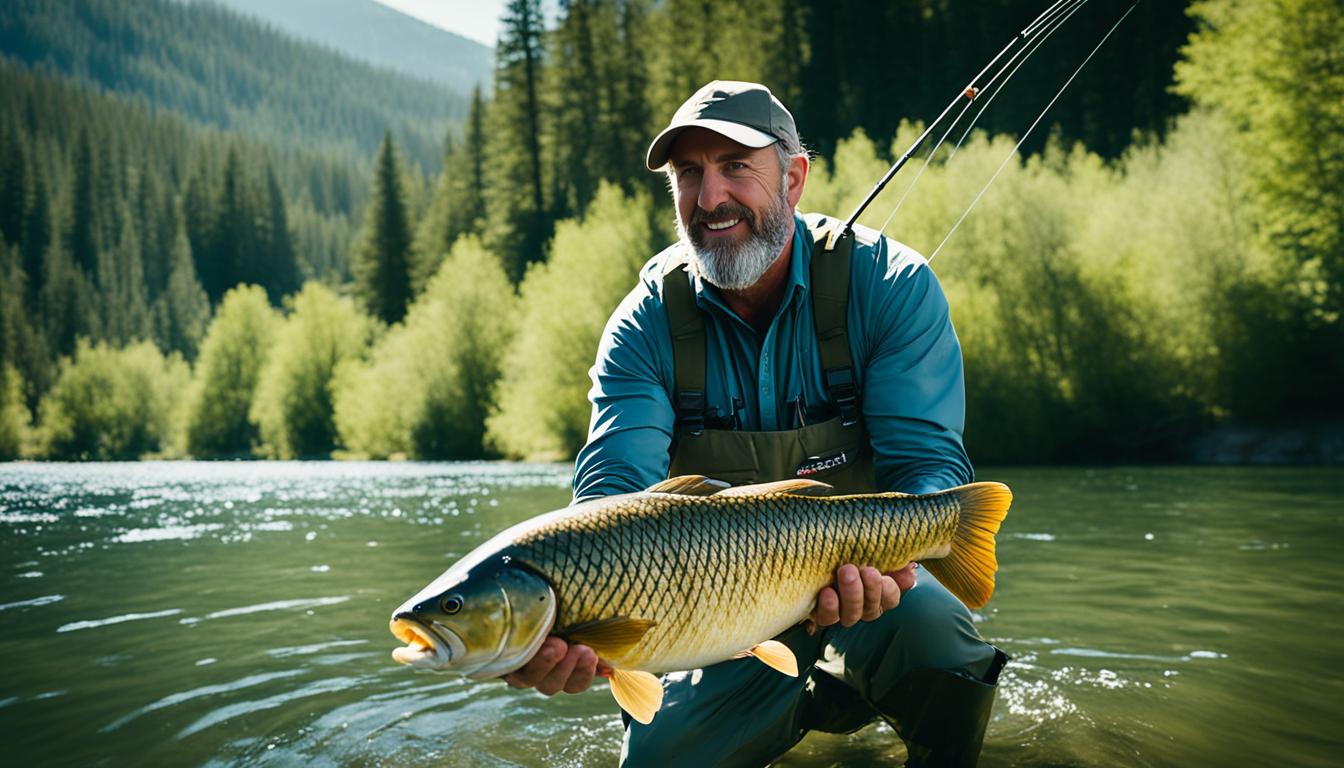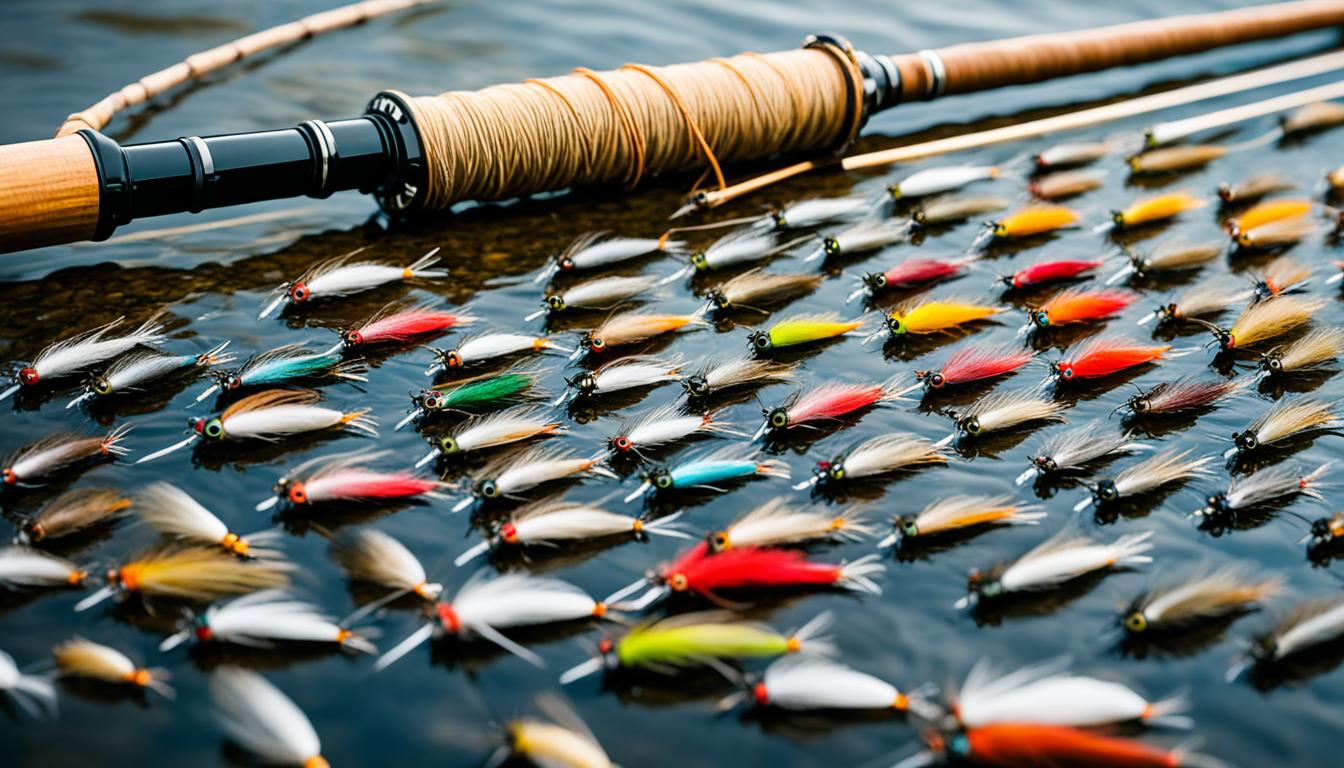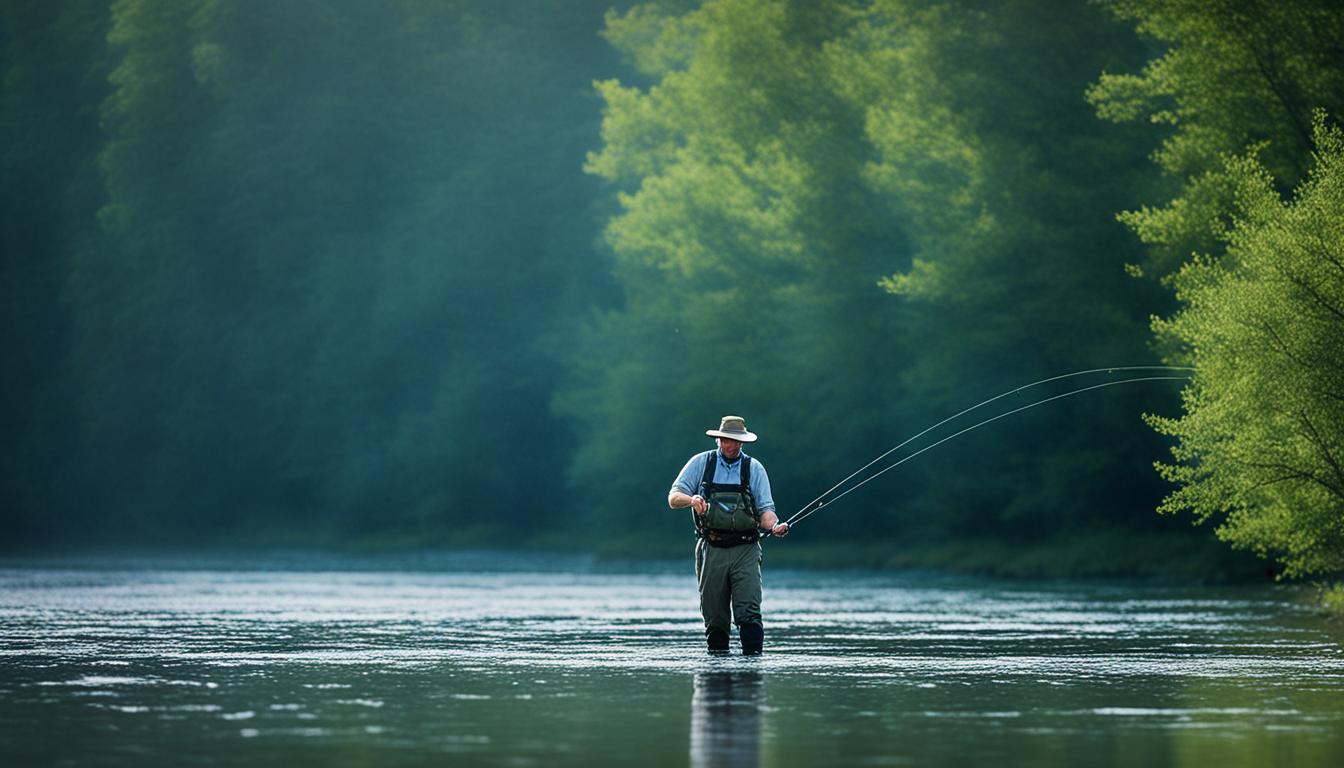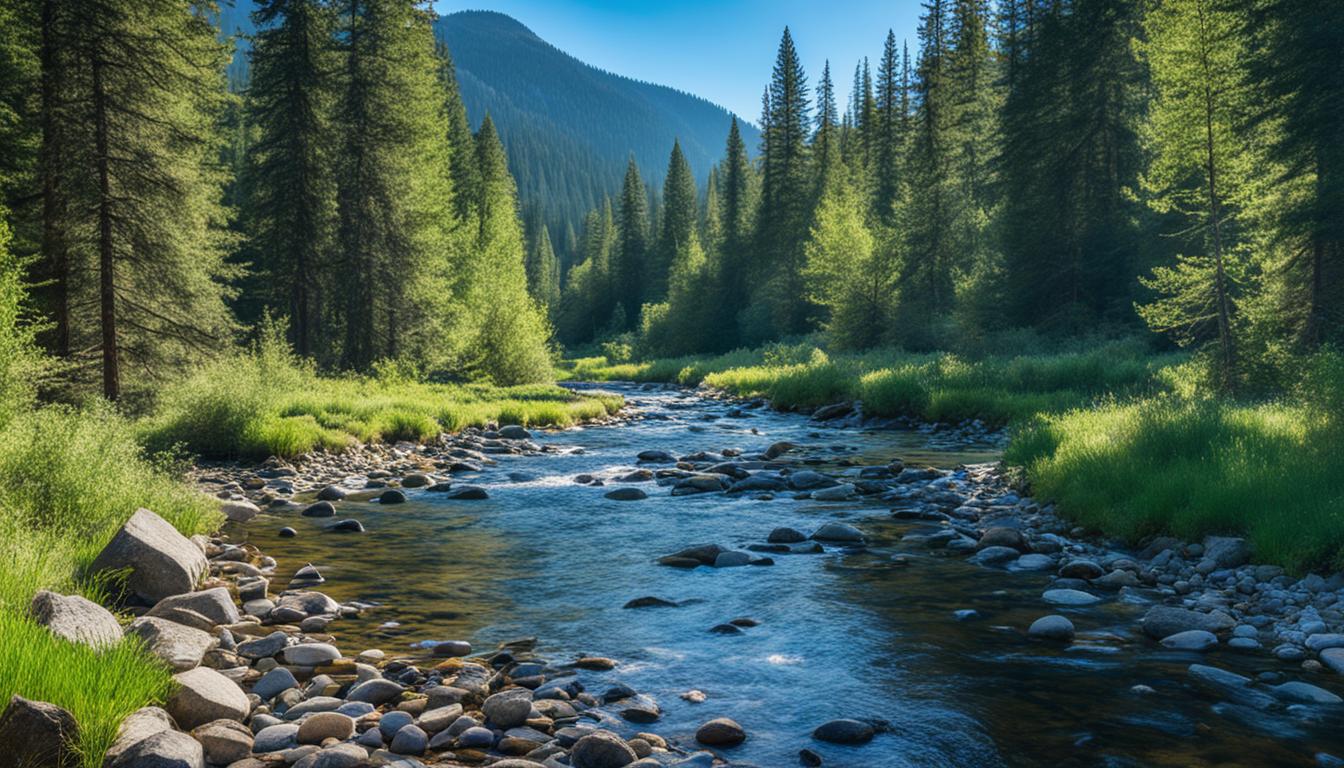Fly fishing for carp is an exciting and challenging way to target these strong and plentiful fish. It’s a great way for anglers of all skill levels to learn and refine their fly fishing techniques. Whether you’re a beginner or an experienced angler, carp fishing on the fly offers a unique and rewarding fishing experience.
To get started, all you need is a basic fly setup. A 6wt rod with a floating fly line and an 8lb-tapered leader will suffice. As for flies, large dry flies like Hoppers and Redtags are effective when carp are surface feeding. Wet flies like Woolly Buggers and Mrs. Simpson flies work well when carp are cruising. Baiting the water with small pieces of bread or rolled oats can also attract carp to your fly. Employing a slow twitching technique is often the most effective when presenting your fly to carp.
Fly fishing for carp is a visual and rewarding form of fishing. You’ll have the opportunity to spot cruising fish and watch them take your fly. It’s an exhilarating experience that can provide endless hours of fun on the water.
Key Takeaways:
- Fly fishing for carp is an exciting and challenging way to target strong and plentiful fish.
- A 6wt rod with a floating fly line and an 8lb-tapered leader is a basic fly setup for carp fishing.
- Large dry flies like Hoppers and Redtags are effective for surface feeding carp, while wet flies like Woolly Buggers are great for cruising carp.
- Baiting the water with small pieces of bread or rolled oats can attract carp to your fly.
- Using a slow twitching technique when presenting your fly is often effective when targeting carp.
Carp Fly Fishing Gear
To successfully fly fish for carp, you’ll need the right gear. A 6wt rod with a floating fly line is suitable for targeting carp. A basic setup can cost around $90 and includes a rod, reel, line, and tapered leader. Pflueger offers a great rod and reel combo for around $79.00 that is suitable for beginner and advanced anglers alike.
When it comes to flies, the choices will depend on the carp’s feeding habits. Large dry flies like Hoppers and Redtags can be effective when carp are surface feeding, while wet flies like Woolly Buggers and Mrs. Simpson flies work well when carp are cruising. Having a selection of different flies is recommended to increase your chances of success.
Here are some top carp flies:
- Hoppers
- Redtags
- Woolly Buggers
- Mrs. Simpson flies
Each type of fly has its advantages and can be effective in different situations. Experimenting with different flies will help you determine which ones work best for you.
Carp Fly Fishing Techniques
When it comes to fly fishing for carp, there are several techniques that can help you successfully hook these elusive fish. One effective method is to bait the water with small pieces of bread or rolled oats to attract carp to your fly. This approach works well in rivers, lakes, and lagoons, where carp are known to feed on such bait.
When you’re on the water, keep an eye out for signs of feeding fish, such as carp mouthing or water swirls. These indications can guide you to the feeding area, where you can direct your fly to entice the carp.
A slow twitching technique is often the most effective when fly fishing for carp. This technique involves making the fly pulse forward slowly under the water, mimicking the movement of natural food sources. Carp are not easily spooked by rough fly placement, so precise casting is not as crucial as with other fish species.
Another tactic to consider is letting the fly sink slowly, even to the bottom. Carp often pick up flies from the bottom, so this can result in the best hook-ups. Observe the carp’s behavior and adjust your technique accordingly to increase your chances of success.
Fly fishing for carp provides a unique and visually appealing fishing experience. Spotting cruising fish and watching them take your fly adds to the excitement of the sport. It’s a rewarding challenge that allows you to test your skills and engage with nature in a meaningful way.
We have found that using a slow twitching technique and letting the fly sink slowly can lead to successful hook-ups with carp. However, each fishing situation can be different, so it’s essential to adapt your approach based on the behavior and feeding patterns of the carp.
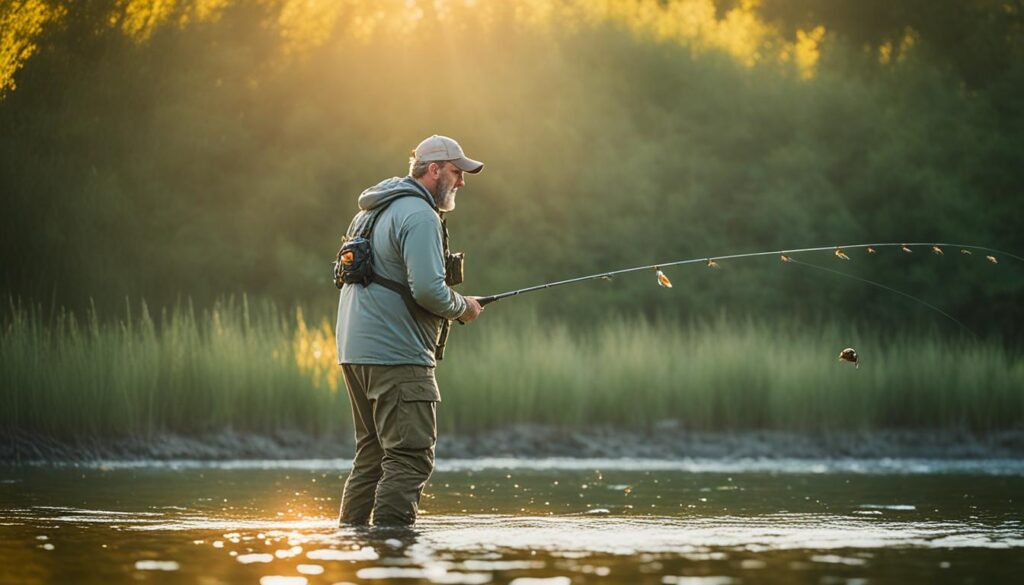
Carp Fly Fishing Techniques Recap:
- Bait the water with small pieces of bread or rolled oats to attract carp
- Look for signs of feeding fish, such as carp mouthing or water swirls
- Use a slow twitching technique to make the fly pulse forward slowly
- Let the fly sink slowly, imitating natural food sources
Continue to Section 4: Carp Fly Fishing Tips and Best Practices.
Carp Fly Fishing Tips and Best Practices
When it comes to fly fishing for carp, employing the right tips and tactics can significantly enhance your chances of success. Here are some valuable carp fly fishing tips and best practices:
TIP 1: Choose the Right Location
To maximize your chances of catching carp, it’s essential to select the right fishing location. Look for areas where carp are known to feed, such as banks with ample room for a backcast and windward banks. These areas are likely to have carp already feeding, which increases the likelihood of attracting them with your fly. For even better results, lace the bank with small pieces of bread or rolled oats to entice the carp further.
TIP 2: Pay Attention to Clear Water
Clear water visibility plays a crucial role in carp fly fishing. Look for spots with clear water and keep a close eye on the movements of the carp. You’ll want to use a slow twitching technique to present your fly in a natural and enticing manner. By mimicking the movements of natural prey, you’ll increase your chances of enticing a strike from these cautious fish.
TIP 3: Be Patient and Observant
When targeting carp on the fly, patience and observation are key. Carp can be selective and easily spooked, so it’s important to be patient and pay attention to their behavior. Take the time to study their feeding patterns and observe any signs of activity such as tails breaking the surface or water swirls. By carefully observing and understanding the carp’s behavior, you can make more accurate presentations and increase your chances of a successful catch.
TIP 4: Use the Right Flies
The choice of fly plays a significant role in carp fly fishing. While there are various fly patterns that can be effective, some popular choices include woolly buggers, Mrs. Simpson flies, and large dry flies like hoppers and red tags. It is recommended to have a selection of different fly patterns available to increase your chances of success in different conditions.
By following these carp fly fishing tips and best practices, you’ll improve your success rate and have a more enjoyable fishing experience. Remember to stay patient, observant, and adaptable with your techniques. Carp fly fishing offers a thrilling and visual fishing experience that can be enjoyed by anglers of all skill levels.
| Tips | Advantages |
|---|---|
| Choose the Right Location | – Increases chances of attracting feeding carp – Allows for strategic casting and presentation |
| Pay Attention to Clear Water | – Enables better visibility of carp movements – Allows for the use of more subtle presentation techniques |
| Be Patient and Observant | – Helps in understanding carp behavior and feeding patterns – Increases the accuracy of presentations |
| Use the Right Flies | – Increases the likelihood of triggering a strike – Offers versatility in different fishing conditions |
Conclusion
Fly fishing for carp is a thrilling and accessible form of fishing that appeals to anglers of all skill levels. Whether you’re a beginner or an experienced fly angler, targeting carp on the fly offers a unique challenge and the opportunity to catch strong and plentiful fish. With the right gear, flies, and techniques, you can immerse yourself in the excitement of advanced carp fishing on the fly.
To start your adventure, make sure you have the appropriate gear. A 6wt rod with a floating fly line is a suitable choice for targeting carp. Pair it with a selection of carp flies, such as Hoppers, Redtags, Woolly Buggers, and Mrs. Simpson flies, depending on the carp’s feeding habits. Being equipped with the right tools will enhance your chances of success on the water.
When it comes to techniques, consider baiting the water with small pieces of bread or rolled oats to attract carp to your fly. Focus on delivering your fly to feeding areas and using a slow twitching technique to entice the fish. Being patient and observant will pay off as you watch carp cruising and taking your fly.
So, whether you’re exploring new waters or returning to familiar ones, fly fishing for carp promises an exciting and rewarding experience. Challenge yourself, hone your skills, and enjoy the adventure that awaits you in the world of advanced carp fishing on the fly.
FAQ
What is advanced carp fishing on the fly?
Advanced carp fishing on the fly refers to the technique of using fly fishing gear and techniques to target and catch carp. It is a challenging and exciting form of fishing that requires skill and practice.
What gear do I need for carp fly fishing?
To fly fish for carp, you will need a 6wt rod with a floating fly line, an 8lb-tapered leader, and a selection of flies suitable for carp. You can find affordable rod and reel combos that are suitable for beginners and advanced anglers alike.
What are the best flies to use for carp fly fishing?
The best flies for carp fly fishing will depend on the carp’s feeding habits. Large dry flies like Hoppers and Redtags are effective when carp are surface feeding, while wet flies like Woolly Buggers and Mrs. Simpson flies work well when carp are cruising. It’s recommended to have a selection of different flies to increase your chances of success.
What are some techniques for carp fly fishing?
One effective technique for carp fly fishing is to bait the water with small pieces of bread or rolled oats to attract carp to your fly. Look for signs of feeding fish and deliver your fly to the feeding area. A slow twitching technique is often the most effective, as it makes the fly pulse forward slowly under the water. Carp are not easily spooked by rough fly placement, so precision casting is not crucial.
What are some tips and best practices for carp fly fishing?
When fly fishing for carp, it’s important to look for areas where carp are known to feed, such as banks with ample room for a backcast and windward banks. Pay attention to clear water and use a slow twitching technique to present your fly in a natural and enticing way. Be patient and observant, as carp can be selective and cautious. By practicing these tips and tactics, you’ll improve your success rate when targeting carp on the fly.
